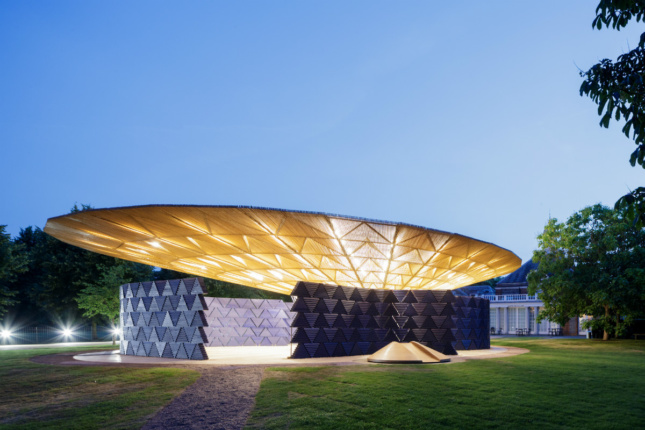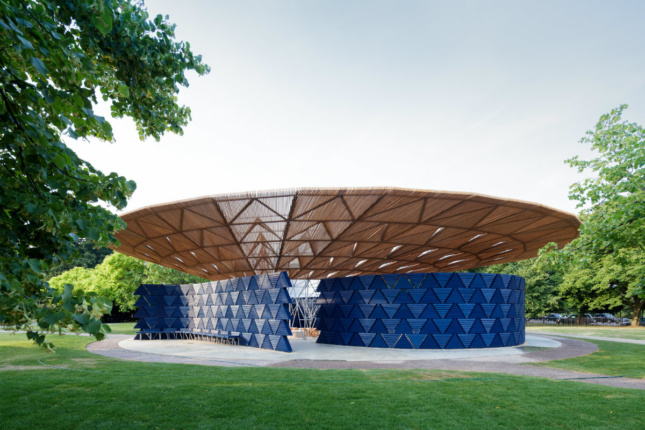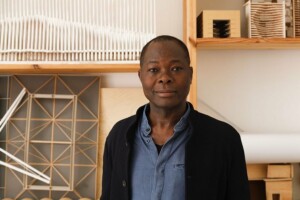The 2017 Serpentine Pavilion, in West London’s Kensington Gardens, has been built. Designed by Diébédo Francis Kéré, the Burkina Faso–born and Berlin-based architect, it’s the 17th pavilion to be commissioned. (A new pavilion is erected annually ever summer.)
For the design, Kéré drew inspiration from a tree in Gando, Burkina Faso, where he designed a school. In Gando, the tree acts as a way to bring people together, and in Kensington, Kéré has emulated this aspect with a wooden canopy, supported by steel framework, that shelters a gathering area. Furthermore, the architect aims to encourage connectivity with nature, as was also the case in Gando.
While there is no literal tree here, Kéré achieves its effects with a translucent polycarbonate sheet rainwater collection system that transforms the graveled center of the pavilion—where the steel framework stems from—into a waterfall. It’s estimated roughly 2,400 gallons of water will be collected, all of which will be used to irrigate the gardens. (Though it may be summer in London, there is no danger of it not raining—knock on wood.)
“I am fascinated by how this artificial landscape offered a new way for people in the city to experience nature. In Burkina Faso, I am accustomed to being confronted with climate and natural landscape as a harsh reality,” Kéré said in a press release. “For this reason, I was interested in how my contribution to this Royal Park could not only enhance the visitor’s experience of nature, but also provoke a new way for people to connect with each other.”
The gathering area, which offers seating, is encased by a series of blue walls made up of tesselating wooden triangles that curve with and away from the roof’s focal point. The triangles, like the canopy above, are arranged so that subtle apertures allow light to filter through and amplify the pattern of triangular motifs. The walls, while rising above head height, do not come into contact with the canopy, nor do they fully enclose the area. This allows air to flow easily through the structure and also frames views above into the gardens actual trees.
“As an architect, it is an honor to work in such a grand park, especially knowing the history of how the gardens evolved and changed into what we see today. Every path and tree, even the Serpentine lake, were carefully designed,” Kéré added.
Serpentine Artistic Director Hans Ulrich Obrist and CEO Yana Peel, along with advisors David Adjaye and Richard Rogers, chose Kéré, who works extensively across Europe, Africa, and his hometown of Gando. In the U.S., his work was most recently the focus of an exhibition at the Philadelphia Museum of Art. The pavilion will be on show and open to the public from June 23 through October 8 of this year.














